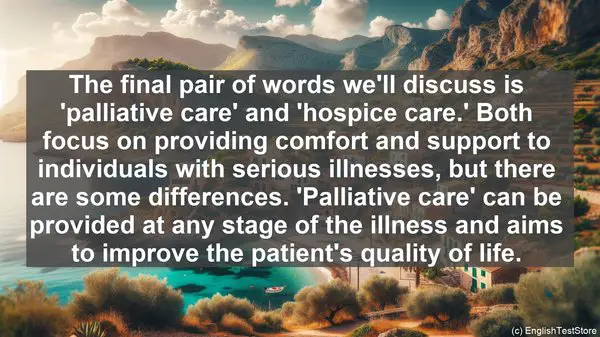Introduction
Welcome back to our channel. Today, we have an interesting topic to discuss. We often come across words that sound similar but have different meanings in the field of cancer immunotherapy. These words can be quite confusing, even for experienced individuals. So, in this lesson, we’ll be exploring the top 10 commonly confused words in cancer immunotherapy. Let’s get started!
1. Tumor vs. Tumour
The first pair of words that often causes confusion is ‘tumor’ and ‘tumour.’ Both words refer to an abnormal mass of tissue, but ‘tumor’ is the American English spelling, while ‘tumour’ is the British English spelling. So, the difference lies in the regional variation of English. It’s important to be aware of these spelling differences, especially when reading research papers or communicating with professionals from different regions.

2. Remission vs. Cure
Another commonly confused pair is ‘remission’ and ‘cure.’ When a patient is in ‘remission,’ it means that the signs and symptoms of the disease have reduced or disappeared. However, it doesn’t guarantee a permanent cure. On the other hand, ‘cure’ implies the complete eradication of the disease. So, while ‘remission’ is a positive state, ‘cure’ is the ultimate goal in many cases.
3. Adjuvant vs. Neoadjuvant
In the context of cancer treatment, ‘adjuvant’ and ‘neoadjuvant’ are often used. ‘Adjuvant’ refers to treatments given after the primary treatment, such as surgery, to reduce the risk of recurrence. On the contrary, ‘neoadjuvant’ treatments are administered before the primary treatment to shrink the tumor or make it easier to remove. Both approaches have their significance and are chosen based on the specific situation.
4. Efficacy vs. Effectiveness
While ‘efficacy’ and ‘effectiveness’ are related to the outcome of a treatment, they have distinct meanings. ‘Efficacy’ refers to how well a treatment works under ideal conditions, such as in a controlled clinical trial. On the other hand, ‘effectiveness’ considers the real-world scenario, including factors like patient compliance and the presence of other health conditions. So, a treatment may have high ‘efficacy’ but lower ‘effectiveness’ in practice.
5. Side Effect vs. Adverse Event
When we talk about the potential negative outcomes of a treatment, we often use the terms ‘side effect’ and ‘adverse event.’ ‘Side effects’ are the known, expected, and often manageable effects of a treatment. On the other hand, ‘adverse events’ encompass any unexpected or severe reaction, even if it’s rare. It’s crucial for healthcare professionals to monitor and manage both ‘side effects’ and ‘adverse events’ to ensure patient safety.
6. Monoclonal Antibody vs. Polyclonal Antibody
In the field of immunotherapy, ‘monoclonal antibody’ and ‘polyclonal antibody’ are frequently used terms. ‘Monoclonal antibodies’ are produced from a single type of immune cell and specifically target a particular antigen. In contrast, ‘polyclonal antibodies’ are a mixture of different antibodies, each targeting a slightly different part of the antigen. Both types have their applications and advantages, depending on the therapeutic goal.

7. Immunotherapy vs. Chemotherapy
While both ‘immunotherapy’ and ‘chemotherapy’ are cancer treatment approaches, they differ in their mechanisms. ‘Chemotherapy’ involves the use of drugs that kill rapidly dividing cells, including cancer cells. On the other hand, ‘immunotherapy’ harnesses the body’s immune system to recognize and destroy cancer cells. The choice between the two depends on various factors, such as the type and stage of cancer, and the patient’s overall health.
8. Prognosis vs. Diagnosis
In the context of cancer, ‘prognosis’ and ‘diagnosis’ are distinct terms. ‘Diagnosis’ refers to the identification of a disease, including its type and stage. ‘Prognosis,’ on the other hand, is the predicted outcome of the disease. It considers factors like the aggressiveness of the cancer, the patient’s overall health, and the available treatment options. ‘Prognosis’ plays a crucial role in determining the appropriate treatment plan.
9. Metastasis vs. Migration
When cancer cells spread from the primary tumor to other parts of the body, it’s referred to as ‘metastasis.’ This process involves the cancer cells breaking away from the primary tumor, entering the bloodstream or lymphatic system, and establishing new tumors in distant organs. ‘Migration,’ on the other hand, generally refers to the movement of cells within a tissue or organ. ‘Metastasis’ is a complex and concerning aspect of cancer progression.
10. Palliative Care vs. Hospice Care
The final pair of words we’ll discuss is ‘palliative care’ and ‘hospice care.’ Both focus on providing comfort and support to individuals with serious illnesses, but there are some differences. ‘Palliative care’ can be provided at any stage of the illness and aims to improve the patient’s quality of life. ‘Hospice care’ is specifically for individuals with a terminal illness, with the goal of providing comfort in their final months or weeks. Both types of care are essential in comprehensive cancer management.
